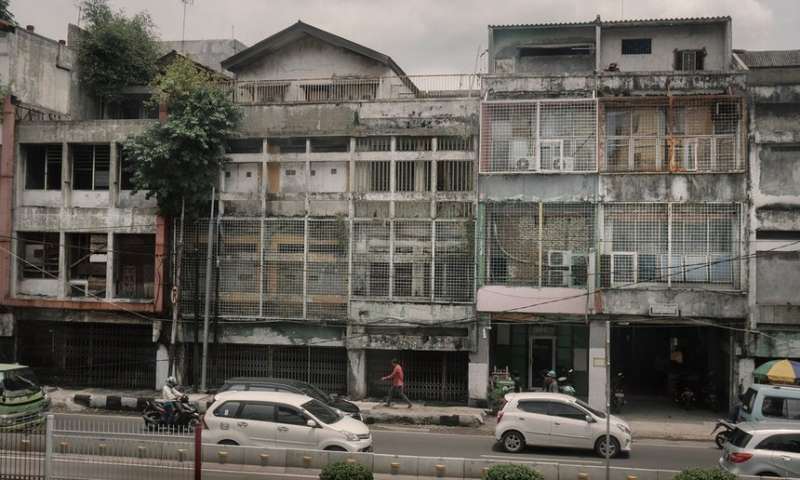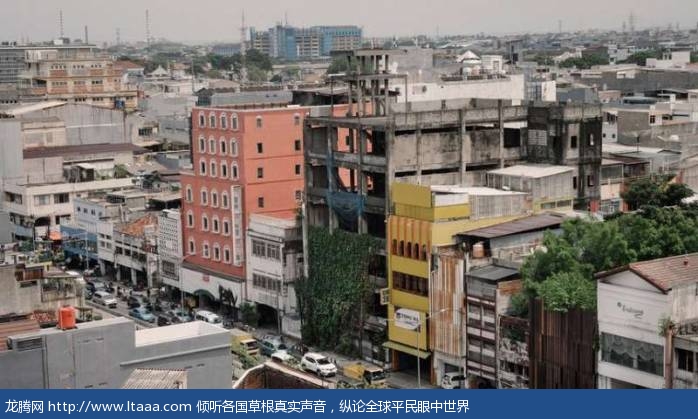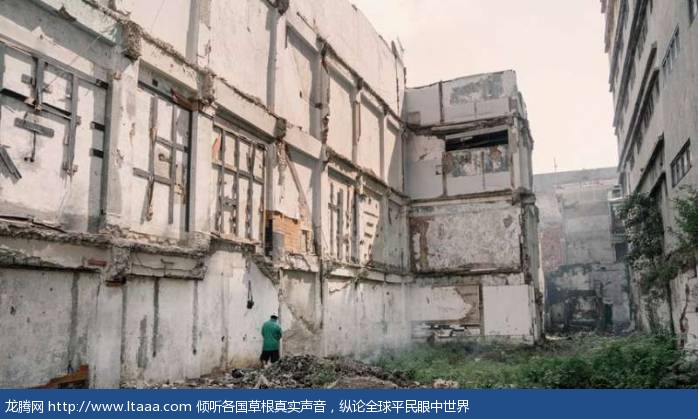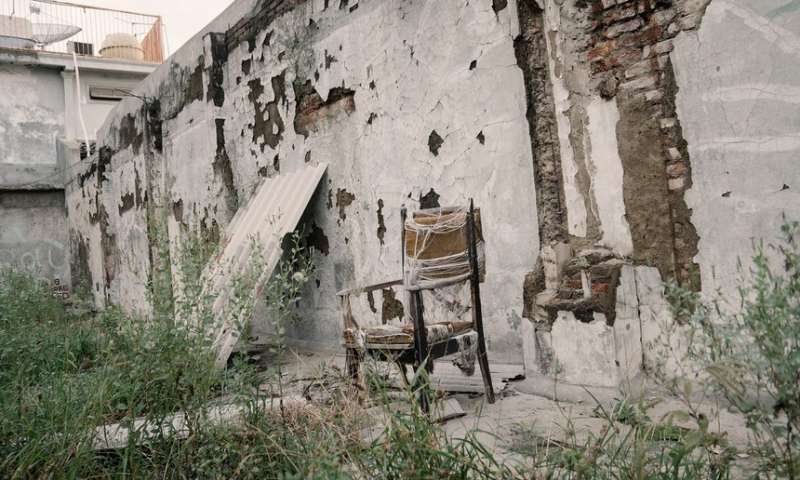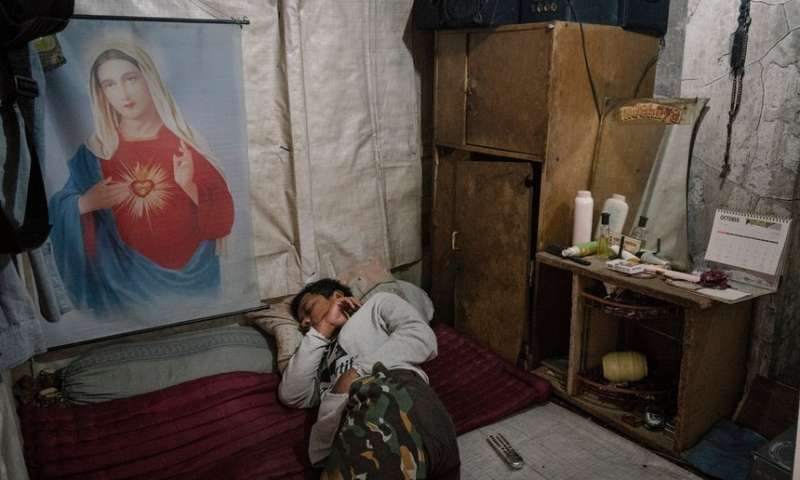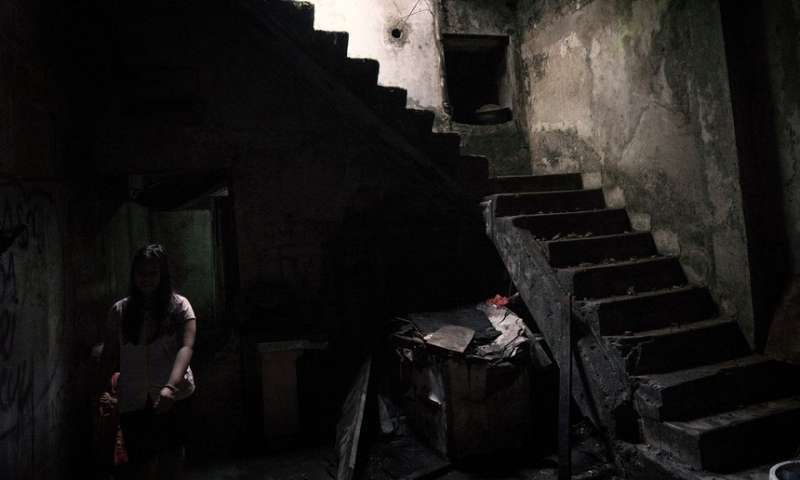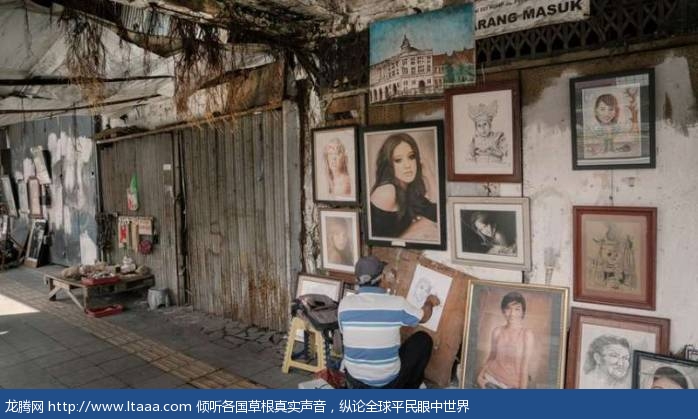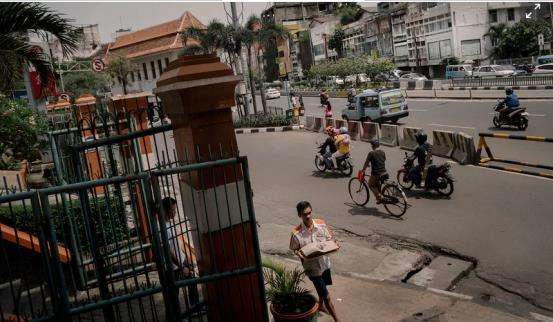雅加达唐人街——那挥之不去的阴影 [英国媒体]
在1998年印尼暴乱蔓延到雅加达的唐人街后,很多印尼—中国人选择逃亡。而今这条街留下的只是些被封锁的回忆。雅加达是一个向前发展,到处轰鸣建设的都市,好像永远不会停止。但是在印尼首都,有一条街道在过去的20年中几乎没有变化。
Waiting for Glodok: the ghost street haunted by Indonesia’s riots
雅加达唐人街——那些挥之不去的阴影。
After the riotsin 1998 spread to the Chinatown area of Jakarta, many Chinese-Indonesians fled.What’s left is a street of boarded-up memories
在1998年印尼暴乱蔓延到雅加达的唐人街后,很多印尼—中国人选择逃亡。而今这条街留下的只是些被封锁的回忆。
A three story building gutted during the May1998 riots.
1998年暴乱时被遗弃的一座三层楼房。
During the Chinatown riots of 1998, shopkeeper Tjie Thian Siak was lucky to escape harm. The mobswere more interested in looting electronics, raiding banks and burning tyresthan they were in stealing house paint from his small store.
在1998年唐人街暴乱期间,小店主Tjie Thian Siak因侥幸没有受到伤害。因为相比偷窃其商铺里油漆,那些暴乱分子更愿意洗劫电子产品和银行以及燃烧轮胎。
When theviolence stopped, Siak, now 69, decided to stay in the neighbourhood. But hesays many of the Chinese-Indonesian families who ran furniture stores here leftand never came back.
在暴乱平息后,Siak(现年69岁)决定留在附近的街区。但是他说道,很多在当年经营家具商铺的印尼—中国人家庭在离开后再也没有回来。
“There’snot that many left, they are afraid,” says Siak. “They moved to residentialareas: that’s why it’s quiet in the evening. Before the riots it was still busyuntil nine or 10pm. Now the shops close at five.”
Siak 说道,“那些没有离开的也感到很害怕,他们搬到了居民区,这就是为什么这里晚上很安静。在暴乱发生前,这里一直到晚上9、10点都很忙碌,可现在商铺在5点就关门了。
Jakartamay be a city on the move – a metropolis of constant buzz, and what feels likeperpetual construction – but one street in the Indonesian capital hasn’tchanged much in almost 20 years.
雅加达是一个向前发展,到处轰鸣建设的都市,好像永远不会停止。但是在印尼首都,有一条街道在过去的20年中几乎没有变化。
Manyof the storefronts of Pintu Besar Selatan, in the Glodok area of north Jakarta,are boarded up with bricks.
位于雅加达北部地区的唐人街中,很多临街商铺都被砖块封死。
Vines and electrical wires mould into one. Peer into the empty windowsand you can still see the charred ceilings, the steel beams curved into aparabola by the heat of the fires.
树藤和电线纠缠在一起。透过空荡荡地窗户,你仍然能过看到被烧焦的天花板,以及因大火燃烧而变形的钢铁横梁。
“The traces are still there,” says Abidin Kusno, director of the Centrefor South-east Asia at the University of British Columbia. “No one seems toclaim the buildings or repair them. It’s almost like a wounded landscape.”
英国哥伦比亚大学东南亚中心主任Abidin Kusno说道:过去的痕迹依然在这里,好像没有人认领或者修缮这些建筑,这像一个被破坏的风景。
The neighborhood has long been associated with Jakarta’sIndonesian-Chinese community. In May 1998, when angry mobs vented their rage against the economic crisis and three decades of authoritarian rule underformer president Suharto, much of the violence was directed at the ethnicChinese minority.
这个街区和位于雅加达的印尼—中国人有着很深的渊源。1998年5月,当暴徒发泄着对经济危机以及对前总统苏哈托三十年独裁统治的不满时,很多暴力指向少数族裔印尼—中国人。
Many Chinese-Indonesians have lived in the country for generations, andfaced deep discrimination and cultural suppression under the Suharto regime. Today, they remain cautious: many shop ownershere prefer not to discuss the past.
在苏哈托时代,即使那些在印尼生活了很多代中国人,依然受到严重的歧视和文化压迫。时至今日,这些中国人依然保持警惕,很多店主不愿提及那些过去。
Some of the abandoned properties in the street are for sale, but thesigns are looking a bit weathered now. One building affected by 1998 isimpossible to access, even with the key: years ago, the local councilmistakenly poured the concrete for the pavement too high, cementing in the door– and the stories behind it.
一些被遗弃的建筑正在出售,但是那些出售标牌看起来已经很久了。有一座受到1998年暴乱影响的楼房,甚至使用钥匙也无法进入。因为在多年前,当地议会将人行道的水泥铺的太高,已经大门封住——以及这座楼房。
Many people who own these properties don’t seem to have any immediateplans on how to develop them – perhaps because it is easier to keep the spaceslocked up and forgotten.
很多房主看起来并没有急着修缮这些楼房的打算,或许是因为把这片地方锁起来,或永远不再想起,对他们来说会更容易一些。
“People really do not want to bring it up again,” says Kusno of 1998.“At the same time, they don’t know what to do with [the empty buildings].”
Kusno说道:“人们真的不想再提及1998年这件事,还有就是房主们真的不知道该对这些空荡荡地楼房做些什么。”
Siak, for example, bought one of the abandoned buildings from a familywho fled, but he hasn’t touched it for almost 20 years. Vines now drip downamong the quiet bricks.
比如说Siak,他之前买了一座因房主逃逃亡而被遗弃的房屋。但是他已有近20年没接触过该房屋,房屋内的树藤已经低垂到了死寂的地面。
Not all of the vacant buildings here were destroyed in the riots – oneis charred from a kitchen fire, while the greenery that carpets the now-defunctMetropole hotel speaks to a failed business venture.
也并不是所有的建筑都在暴乱中被摧毁。这座目前被草木覆盖,曾因厨房大火而被烧焦的都市酒店,似乎在哭诉着一个失败营生。
Among the abandoned spaces, however, there are signs of creativity.Street artists now hawk portraits of princess Diana and Bono, using anabandoned building to store their supplies; some have settled here intomakeshift shacks.
然而,在这些被遗弃的空间里也有代表创造力的标志。街头艺术家们在兜售戴安娜和博诺公主的画像,他们使用一个遗弃的房间来存储供给,还有一些人搬来做临时安身处。
Chinatown’s most famous coffee shop, Kopi Tak Kie, opened in 1927,continues to bustle in the food market nearby. And a modern Chinese teashop hasopened up on the corner, offering a view of the bridge to Glodok Plaza, anelectronics arcade once burned and looted – but since rebuilt.
Kopi Tak Kie是唐人街里最有名的咖啡馆,于1927年开业。但目前在附近的食品市场营业。街角有一座现代化的中国茶馆在营业,提供了窥探新建唐人街商场的视角,之前的旧商场被洗劫和烧毁。
Yet these days many ethnic Chinese people choose to live and do businessin other areas of the city, which aren’t tainted by bad memories.
但是在今天的雅加达,大部分中国人会选择在那些有没痛苦记忆的区域里生活和经商。
版权声明
我们致力于传递世界各地老百姓最真实、最直接、最详尽的对中国的看法
【版权与免责声明】如发现内容存在版权问题,烦请提供相关信息发邮件,
我们将及时沟通与处理。本站内容除非来源注明五毛网,否则均为网友转载,涉及言论、版权与本站无关。
本文仅代表作者观点,不代表本站立场。
本文来自网络,如有侵权及时联系本网站。
图文文章RECOMMEND
热门文章HOT NEWS
-
1
最近,新冠肺炎疫情在日本有扩大的趋势,有专家呼吁日本应当举国行动起来,共...
- 2
- 3
- 4
- 5
- 6
- 7
- 8
- 9
- 10
推荐文章HOT NEWS
-
1
最近,新冠肺炎疫情在日本有扩大的趋势,有专家呼吁日本应当举国行动起来,共...
- 2
- 3
- 4
- 5
- 6
- 7
- 8
- 9
- 10

